Monsoon Season Threatens the Rohingya
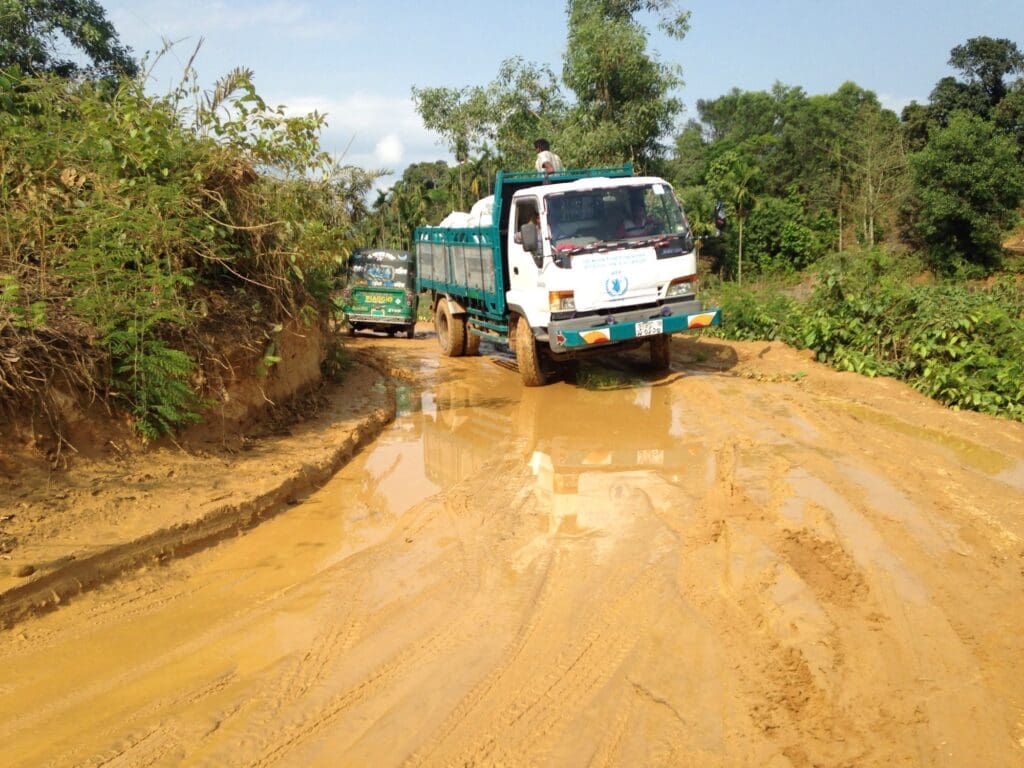
When hundreds of thousands of Rohingya in Myanmar fled violence last year, there wasn’t time to plan out a refugee camp. No time to decide where to build shelters, roads, or bathrooms.
“By the second week of the influx, it was just beyond expectations,” said Sunee Singh, a WFP staffer in Cox’s Bazar, Bangladesh.
Over a six-month period, nearly 700,000 Rohingya made the dangerous journey over the border, relocating their families within a labyrinth of shelters built out of bamboo and tarps. These densely-packed, makeshift homes sprawled across precarious hillsides, vulnerable to extreme weather. It was the kind of rolling terrain that even the local population avoided settling on because of the danger.
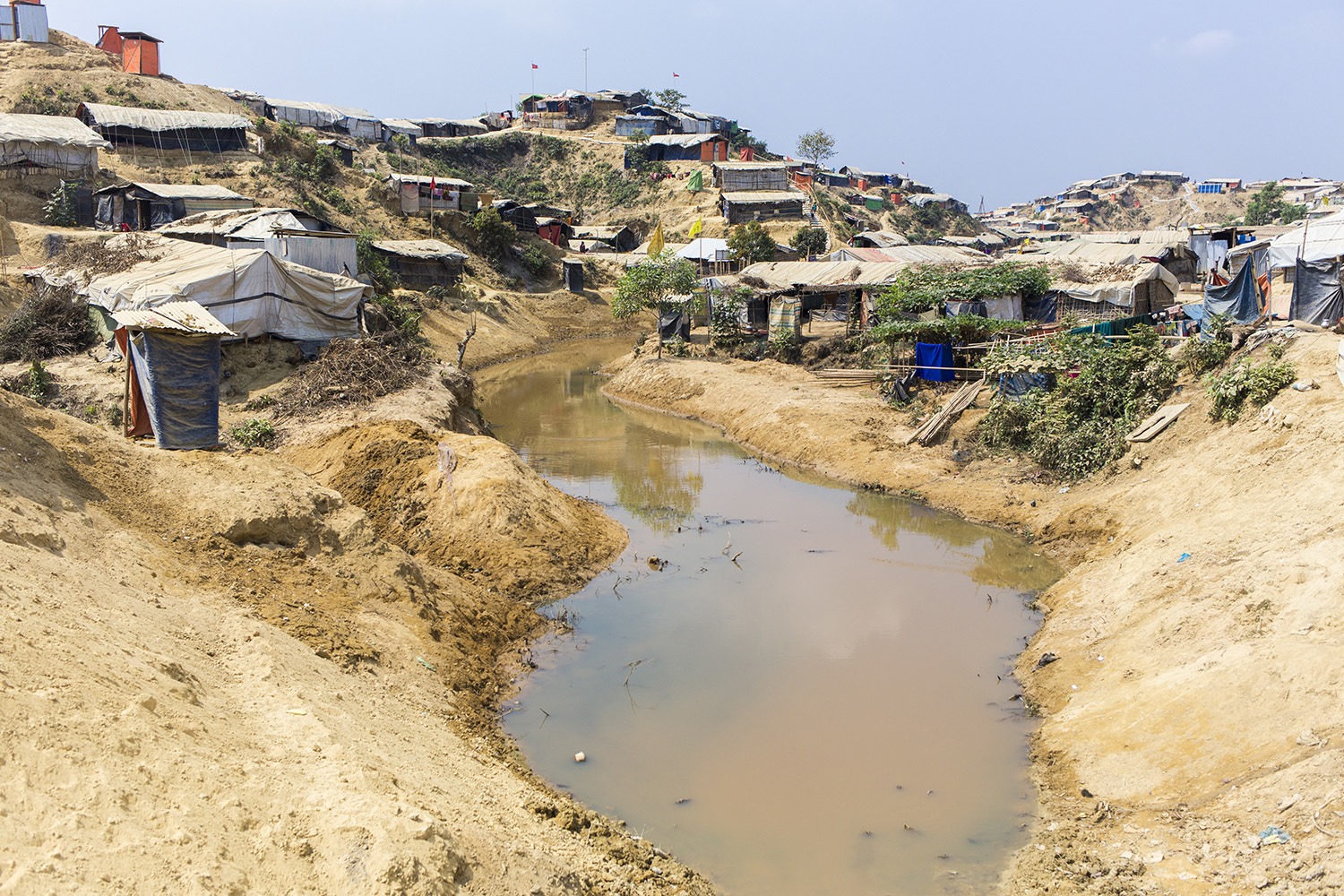
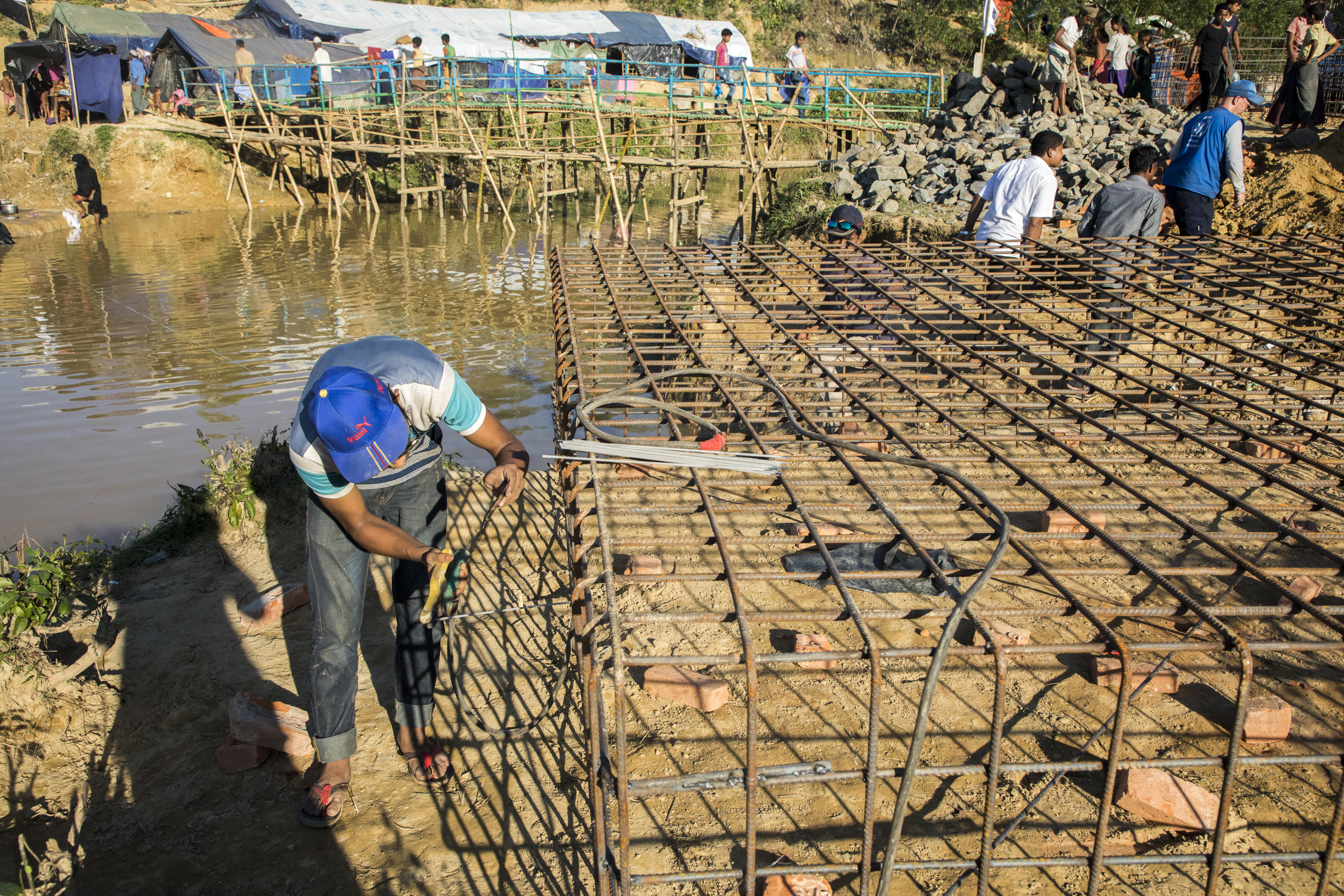
“Looking at the shelters, I could see where and how the land would be affected,” said WFP reports officer Laura Philips. “As we have seen from the beginning of the crisis, the slightest rains lead to slippery slopes, flash flooding and, essentially, a mud bath.”
Now, as the pre-monsoon rains begin, the World Food Programme (WFP) is preparing to avert a potential crisis that could impact the lives of as many as 200,000 Rohingya refugees—the floods and landslides of the monsoon season.
Every year, between May and August, Bangladesh is drenched with rain. Intense flooding and landslides sweep away unstable land, leaving families homeless. In Cox’s Bazar, the rains this year could make Kutupalong— the world’s largest refugee camp—a milieu of broken shelters, some accessible, others inaccessible.
To prepare for the onslaught, WFP is leveraging the expertise of its logisticians and engineers to enhance its ability to deliver food to Rohingya families in need.
WFP staff is extending vital roads across the camps while building a quarter-mile bridge to allow humanitarian aid and people to safely cross the principal waterway in Cox’s Bazar. In exchange for cash to buy food, the agency is working with refugees to fortify embankments and clear drainage channels to reduce the risk of landslides and flooding.
Where necessary, WFP has leveled land to provide safer living spaces for the most at-risk households.
“Our engineers are working around the clock to help build bridges and roads, fortify unstable terrains and reinforce sites against strong winds,” Philips added. “We are exploring options to reach all refugees if and when the sites become inaccessible, including using porters and storing food closer to the communities.”
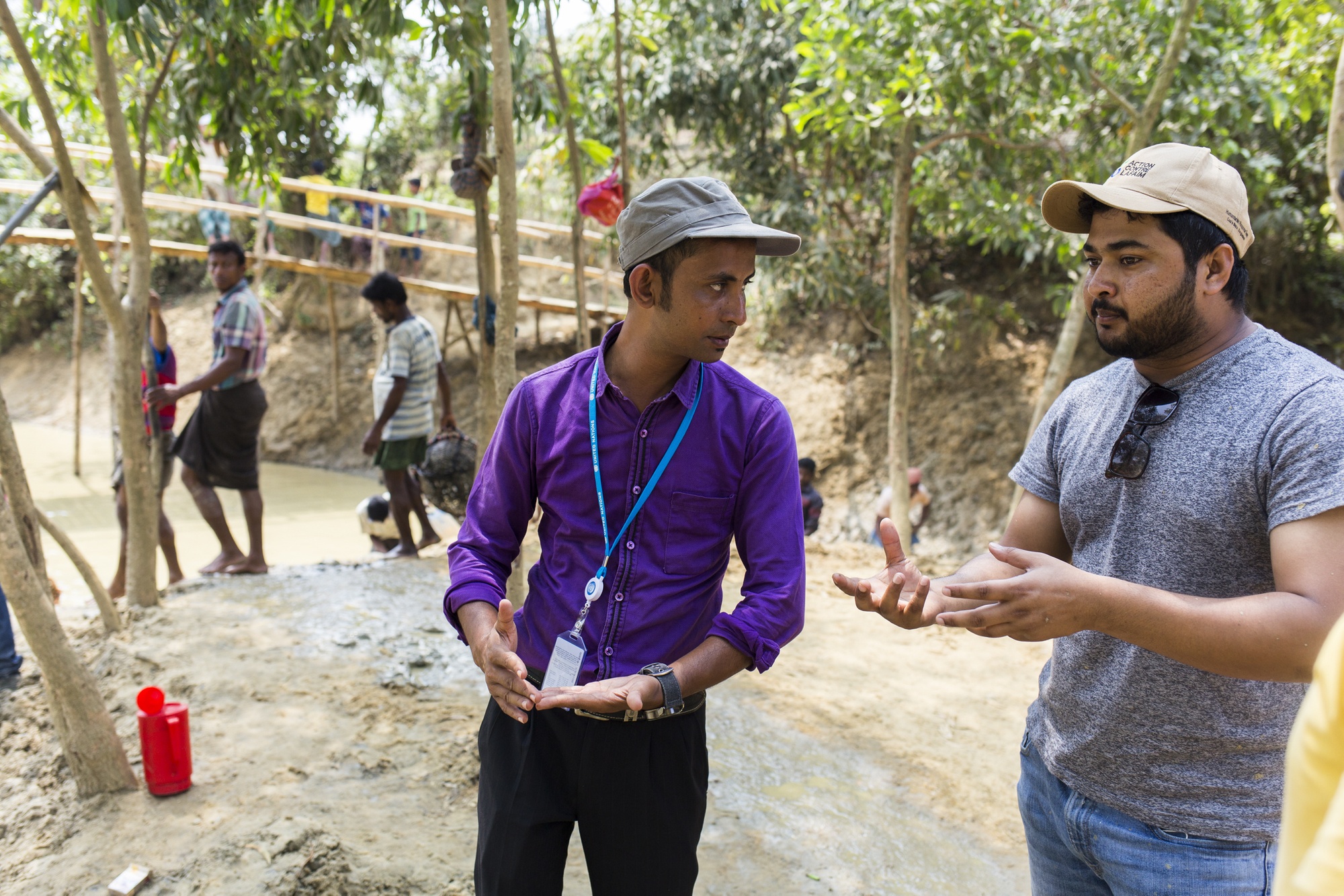
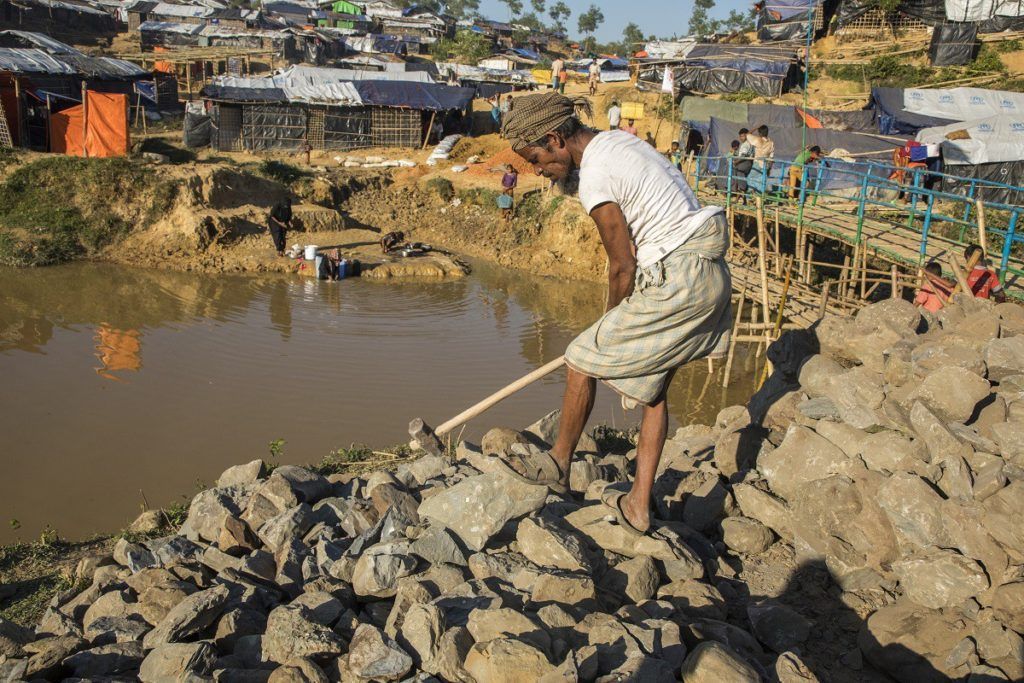
More than just the shelters are at risk. According to IRIN, 25 percent of the camp’s health facilities, latrines, and safe drinking water are exposed. The destruction of these services will likely increase the risk of disease outbreaks—putting pressure on already overstretched humanitarian agencies—including WFP.
The potential human costs are severe. More than a quarter of children under the age of five living in Kutupalong are malnourished. That means they are more likely to die if they contract a disease, making WFP’s work even more important. More than 800,000 refugees now rely on monthly food assistance.
WFP has 19 food distribution points where families receive rations of rice, beans and oil. To address the high malnutrition rate, more than 160,000 pregnant and breastfeeding women, as well as children under five, are receiving a special nutrient-fortified porridge.
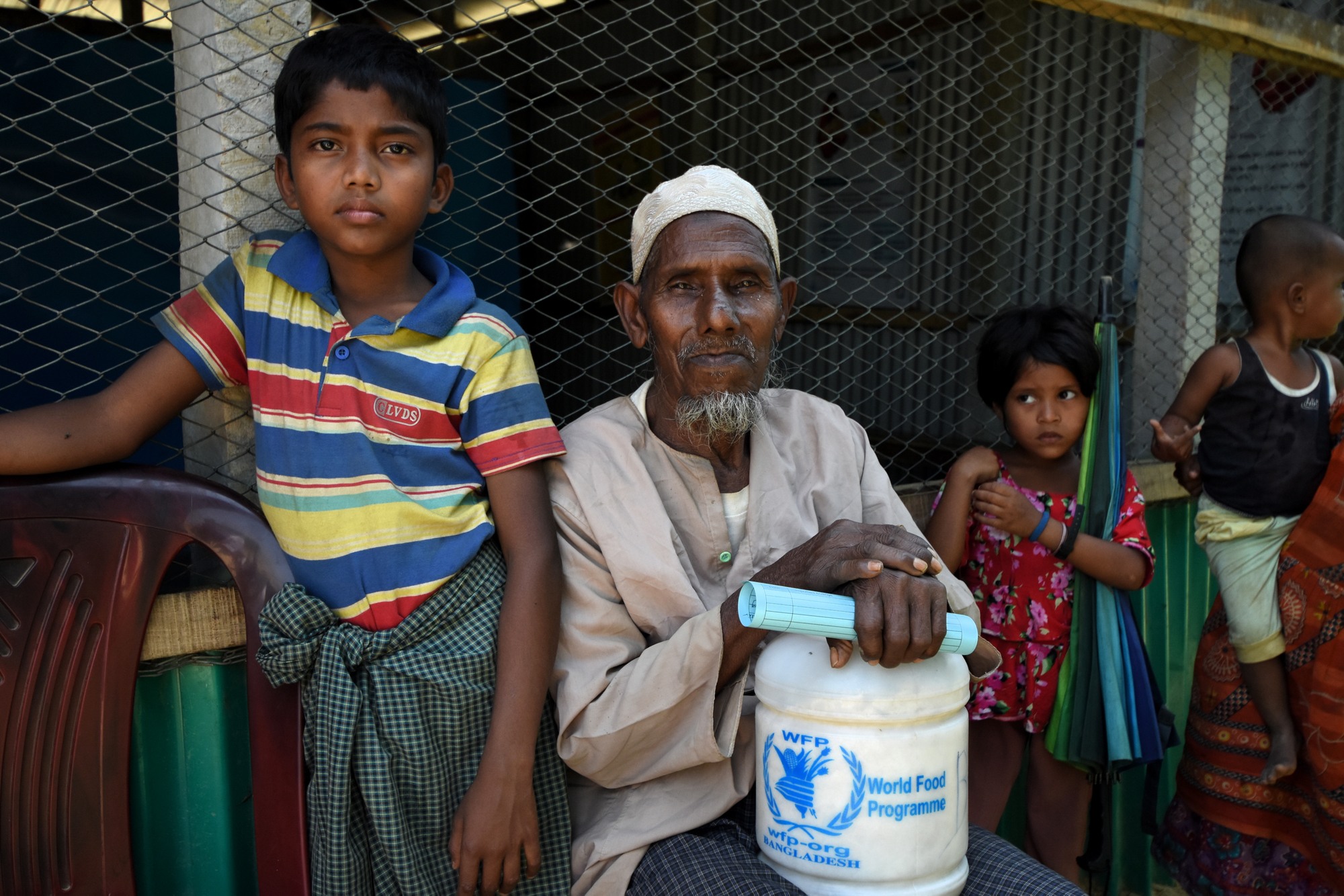
A family receives food and nutrition assistance in the Balakhali refugee camp in Cox’s Bazar.
In recent months, WFP has scaled up its e-card program to allow more than 200,000 refugees the opportunity to buy fresh vegetables, eggs and dried fish at WFP-supported markets to enjoy a more nutritious and diverse diet.
“Access to food during the rainy season will be a challenge,” said WFP’s emergency coordinator in Bangladesh Peter Guest. “It’s not just about the logistics of reaching the distribution points or shops in the camp, it’s about families being able to get their food safely home.”




